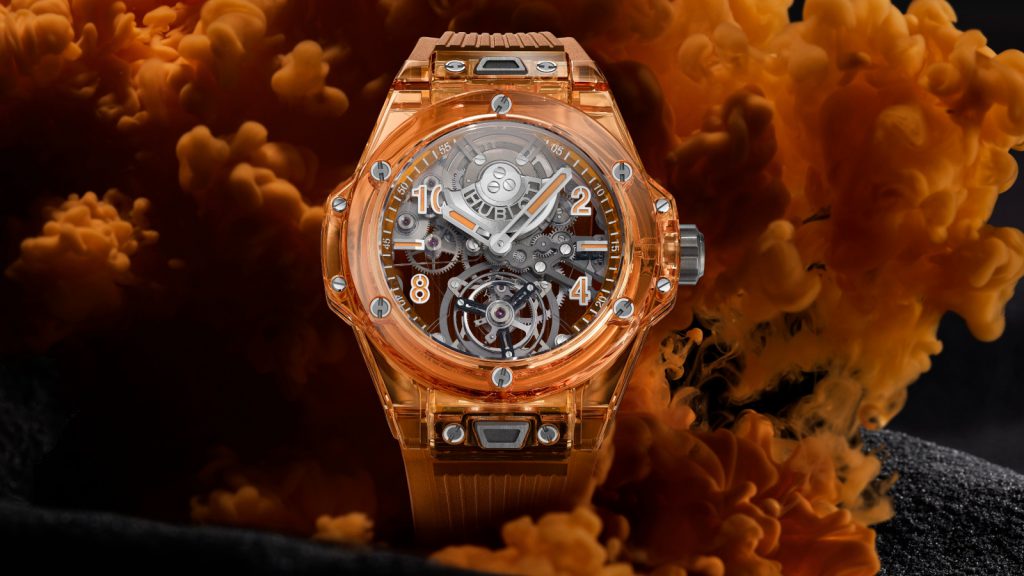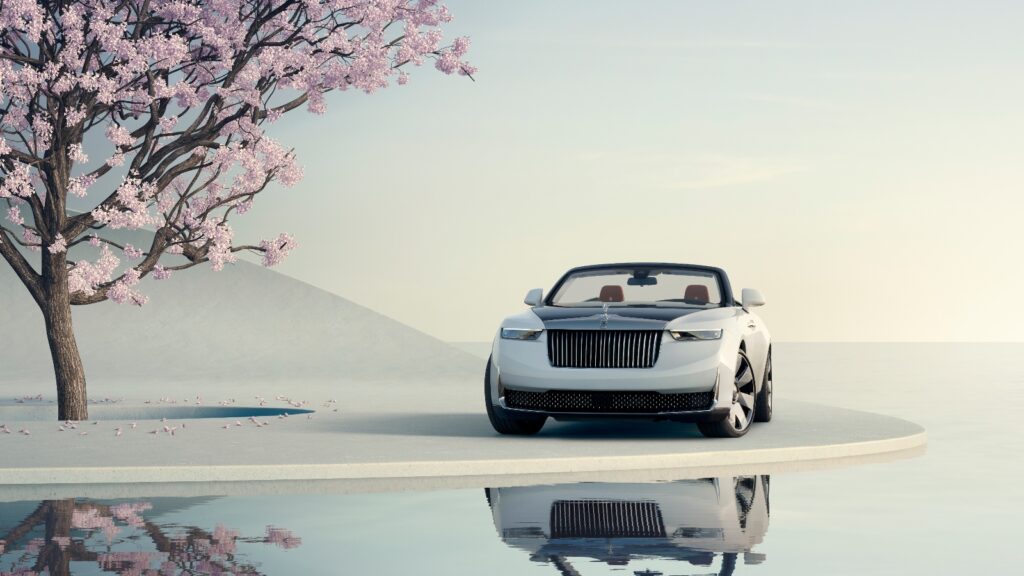Hublot’s Big Bang Tourbillon Automatic Orange Sapphire is a welcome ray of sunshine after a cloudy year, and it’s about as big as the sun. The bright orange sapphire case – the first of its kind, is a hefty 45mm wide by 15.3mm thick, so you can’t miss it. The show doesn’t stop with the colour. It contains Hublot’s first automatic tourbillon, which, in the spirit of innovation, has been engineered to display the rotor on the dial front instead of the back where it is conventionally positioned. The tourbillon bridge, along with the plate and other bridges, are made of clear, untinted sapphire so as not to obstruct the view of the inner workings.
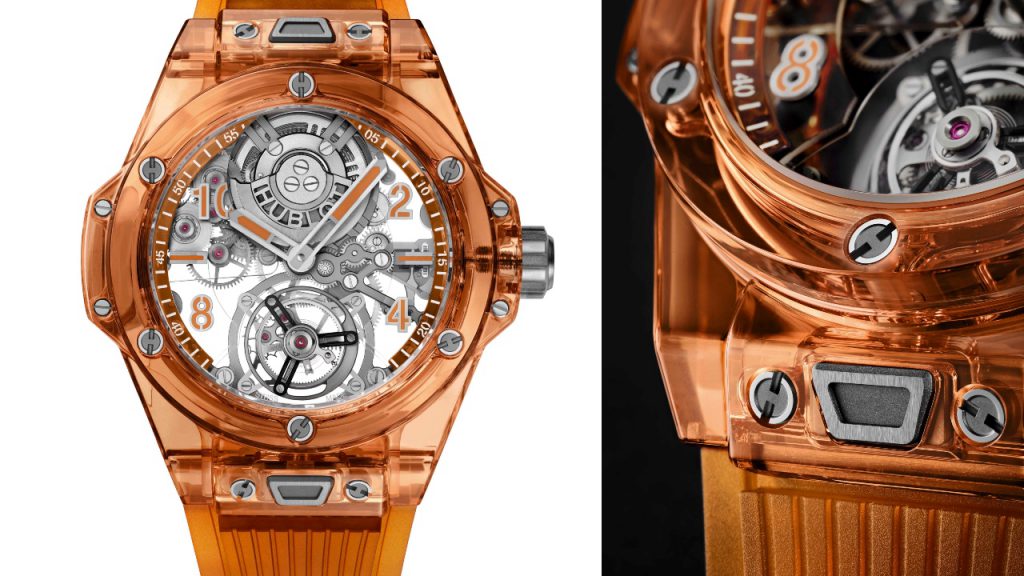
The positioning of the oscillating weight on the dial side has no particular technical advantage – although it does a good job of hiding the mainspring barrel directly behind it, which you can see from the back. According to Hublot CEO Riccardo Guadalupe, “the rotor is there for purely aesthetic reasons. Hublot’s goal has long been to combine tradition with innovation, so we wanted to present a classic tourbillon in a modern way by putting a micro-rotor on the dial side. It’s a spectacle,” he says. “And it creates symmetry. We put it at the 12 o’clock position to balance it with the tourbillon escapement at 6 o’clock.”
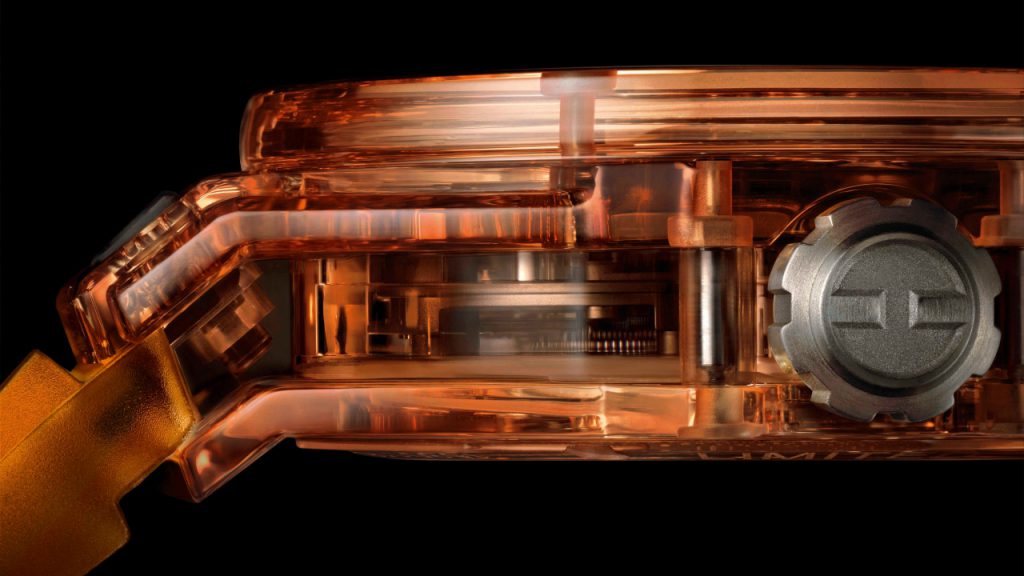
Read More: Showstopping Hublot Watches For 2021 Has Just Been Unveiled
Hublot first developed a sapphire case in 2016 as a solution to the challenge of conceiving the perfect skeletonised. Sapphire was chosen as the ideal material because it created a clear, unobstructed window into the movement. Hublot developed its own metallurgy and materials laboratory, and created the Big Bang Unico Sapphire in a limited edition of 500 pieces in clear sapphire. Next came a succession of transparent crystal watches in different tints: red, blue, yellow, black and now orange. The colour is jaw-dropping, and seems ideal for a ladies’ watch, yet Hublot isn’t likely to scale the piece to ladies’ proportions any time soon. “The size of this calibre is not arbitrary,” says Guadalupe. It was scaled for optimum function. The smaller and thinner you go, the more you run into stability issues.”
View this post on Instagram
The complex case is a LEGO-like construct of approximately 50 components, with each piece machined to precise tolerances in order to fit together like a puzzle. They are held in place by six H-shaped titanium screws on the bezel. “It’s difficult to work with sapphire crystal because is extremely hard, yet fragile,” says Guadalupe, who says the pieces were milled by laser-like cutting in a process called electro-erosion. The sapphire is a synthetic corundum, the same material used to make the rubies that are used to reduce friction around moving parts in mechanical movements. The material has exactly the same properties as natural corundum except that it is made in a lab instead of by nature, and it is free of the kind of inclusions that appear in natural sapphire and ruby. It is the hardest mineral next to diamond.
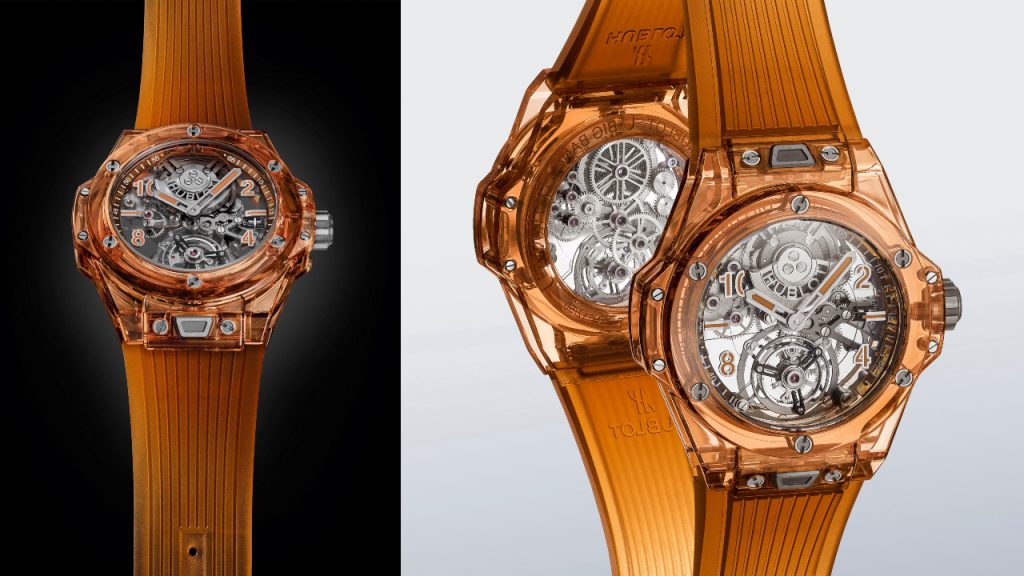
The Caliber MHUB6035, a one-minute tourbillon, has 243 components, including a 22-karat grey-gold rotor. It was three years in the making, and has a 72-hour (three-day) power reserve. The numerals and hands are luminescent orange to match the sapphire, and the strap is orange rubber with a titanium deployant clasp.
The Big Bang Tourbillon Automatic Orange Sapphire will be made in a series of only 10 pieces, and is priced at US$169,000 or about RM684,000. If you like the movement but find the orange sapphire too flashy, there are two non-sapphire versions: the Big Bang Tourbillon Automatic Texalium, which combines carbon fiber and aluminum, and the Big Bang Black Magic, with a ceramic case. Both are 100-piece limited editions, priced at about RM383,000.
Previously published on Robb Report.
